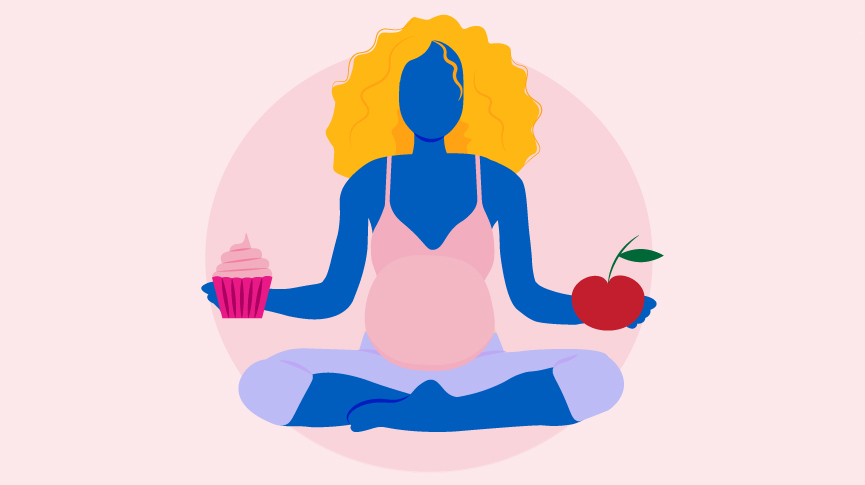How Diabetes Impacts the Vagina

Approximately 18 million American women have diabetes and a staggering 43.7 million have prediabetes. However, 90% of people don’t know they have prediabetes according to a study published in Clinical Diabetes.
Not only can diabetes impact heart health, vision, and kidney health, it can also influence vaginal health.
The reasons for this are because blood glucose is too high and is being inadequately controlled, which is typically seen in women with type 1 diabetes more than type 2 diabetes.
The pancreas is responsible for the hormone insulin which takes the food we eat and turns it into glucose. The body uses glucose for energy. However, if the body does not properly produce insulin, the body doesn’t have any energy, resulting in type 1 or type 2 diabetes.
- Type 1 diabetes is an autoimmune condition that usually appears in children between the ages of 4 and 7 or a little older at 10 and 14 years old. However, it can develop at any age.
- Type 2 diabetes is a condition that occurs when blood sugar is high over long periods of time.
- Prediabetes usually occurs before type 2 diabetes and is when your blood sugar is higher than normal.
Diabetes can tilt a person’s livelihood on their head. With new medication, change in diet, increased exercise regime, blood sugar assessments, and doctor appointments, it can wreak havoc emotionally and physically.
For women, their vaginal health may be at risk when diagnosed. We dove in to a few areas in which diabetes may impact your health below the belt and treatments that can help ease any discomfort.
Yeast Infections
A yeast infection, also known as candidiasis can grow in the mouth and other areas of the body. According to the Office on Women’s Health, three out of four women will have a yeast infection in their lifetime.
In a 2018 study published in Diabetes Care with 300,000 people, those with either type 1 or type 2 diabetes had a higher chance of having a yeast infection.
White patches around the mouth, redness and soreness, trouble eating and swallowing, and swollen gums can all be side effects of oral thrush.
Vaginal thrush can be a symptom of high blood sugar levels as glucose in the urine can contribute to yeast infections. If your sugar levels are off, yeast can feed off of the sugar and cause an infection.
Certain medications can also contribute to vaginal yeast infections. There are a class of diabetes drugs called sodium-glucose co-transporter 2 (SGLT-2) inhibitors which help lower blood sugar. The body will get rid of excess sugar through the urinary tract while on this medication, which means there may be potential for more risk of infection.
Symptoms of vaginal yeast infections include reddening of the skin, white vaginal discharge, soreness and itching around the vagina, and pain during intercourse.
Treatment for yeast infections includes an anti-fungal medication or cream.
To avoid yeast infections, take your medication as instructed, wear cotton underwear, keep your vaginal area dry and clean, change pads and tampons regularly, and avoid any perfumes or lotions that could irritate the area.
Low Libido and Painful Sex
According to 2013 research with 500 women published in the Journal of Natural Science, Biology and Medicine, 81% of the participants experienced low libido and 78% had arousal disorders.
Nerve damage, also known as diabetic neuropathy, after years of uncoltrolled blood glucose can contribute to vaginal dryness and decreased sensation.
Blood flow problems are common for people who have diabetes, which can definitely decrease libido, sexual response, and orgasms.
Treatment for diabetic neuropathy includes over-the-counter lubricant and perscription medicine like estrogen therapy can help alleviate any pain.
According to the Journal of Medicine and Life, people with diabetes are two to three times more likely to be depressed. Therefore, sex may seem less exciting, contributing to painful sex. Medications like anti-depressants also supress lubrication and desire.
Treatment for a low libido isn’t black or white. Some research has found that taking testosterone can help women with diabetes to revive their libido, however, more research must be done.
Moreover, some doctors may have a difficult time differentiating the low libido as a result of diabetes or a results of emotional concerns related to diabetes.
Consider visiting a doctor who specializes in sexual medicine as well as seeing a therapist who can discuss any changes or anxieties you have around your body changes, health concerns, and stress that come with diabetes.
Polycystic Ovary Syndrome
Polycystic ovary syndrome, also known as PCOS, is commonly linked to infertility and insulin resistance. Symptoms of PCOS include thinning hair, irregular periods, acne, and excess hair growth on the face and body—approximately half of women who have PCOS develop diabetes.
PCOS impacts 5 million American women, according to the Centers for Disease Control and Prevention, and while women with PCOS can make insulin, their bodies don’t effectively use it for energy. Women with PCOS also have high levels of the male hormone, androgens, which impacts their ovulation.
The condition can worsen if the person is also overweight, which could lead to heart disease, high blood pressure, sleep apnea, and stroke.
Treatment for PCOS begins with reporting symptoms to a doctor. This may mean irregular periods, issues getting pregnant, or excess acne and hair growth. An endocrinologist, who specializes in hormonal disorders, will check for various symptoms plus conduct an ultrasound and blood test to diagnose someone with PCOS.
Once diagnosed, a person can make lifestyle changes, like losing just 5% of their body weight. They will typically be advised to take combination birth control pills that contain estrogen and progestin in order to regulate hormones. Progestin therapy is another form of treatment where a person will be instructed to take progestin for 10 to 14 days every one to two months in order to regulate their periods.
Urinary Tract Infections
A urinary tract infection (UTI) occurs after bacteria enter the urinary tract. It can impact the urethra, kidneys, and bladder.
People with diabetes, especially women, are prone to having sugar in the urine which is the perfect breeding ground for bacterial growth, influencing the possibility of an infection. As a result, folks with diabetes may have more UTIs. When too much sugar builds up, urine may appear cloudy and smell sweet.
Symptoms of a UTI include fever, appetite changes, frequency of urination, and pain with urination.
If UTIs aren’t treated, kidney complications or other infections can occur.
In order to prevent UTIs, drink plenty of water, wipe from the front to back, don’t hold in your urine, and wear cotton undewear. Beyond this, regulate your insulin levels and sugar levels.
Treatment for UTIs is the same as someone who doesn’t have diabetes, which includes a low dose antibiotic. Your doctor will also advise you on how to correct any metabolic complications.
Overall, the changes that come with life after diabetes go beyond medication and doctors appointments. They may interfere with the bedroom, your romantic life, or even bodily comfort. Protecting your vaginal health by staying informed and being aware of potential risks can ensure a healthy vagina and improved quality of life.

S. Nicole Lane is an editor and journalist living on the South Side of Chicago.


